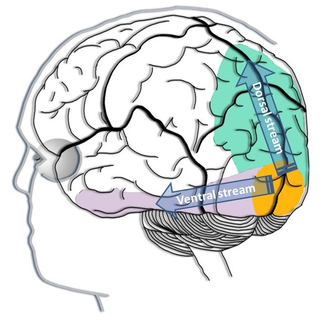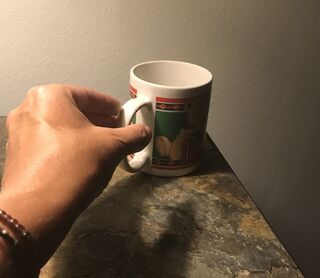Memory
This Optical Illusion Makes Dentists Drill Oversized Holes
Size illusions fool your visual system when you aim for precision.
Posted June 27, 2020

When dentists drill holes in your teeth, they often drill holes that are much larger than they need to be. This was the lesson of a study conducted by O’Shea, et al. (2013). The researchers asked experienced dentists to cut cavities in real human teeth that were prepared to look like the teeth dentists normally see when making a cavity in a root canal. The teeth were randomly selected from teeth the dentists would normally encounter, and the dentists used their own tools and procedures for the cutting.
The teeth the dentists were asked to work on presented more or less potent versions of the Delboeuf illusion, an illusion that makes an inner circle appear smaller when surrounded by a large circle than when surrounded by a small circle.
The team found that the illusion made the root canal for filling appear smaller to the dentists, which caused them to cut cavities in preparation for filling that were larger than needed. The size of the cavities the dentists made was found to be linearly related to the strength of the Delboeuf illusion.

What explains this effect of the Delboeuf illusion? The illusion belongs to a family of size illusions that also contains the Ebbinghaus illusion. In the Ebbinghaus illusion, a central circle is surrounded either by large circles or small circles. Although the central circle has the same dimensions in the two contexts, it perceptually appears smaller in the large-circle context than in the small-circle context. However, in studies in which people are asked to grasp the central circle in the large-circle and the small-circle contexts, the opening of their hand, or what is also known as the hand aperture, was only marginally influenced by the illusion.
These findings have been used (along with studies of cognitive abnormalities as a result of brain lesions) to support the hypothesis, originally set forth by David Milner and Melvyn Goodale, that we have two distinct visual systems, or streams: the perception stream, which is dedicated to ordinary visual perception ("the ventral stream") and the action stream, which is dedicated to action ("the dorsal stream") (Goodale et al., 1991; Milner & Goodale, 1995, 2008). Apparently, it's only the perception stream that is really fooled by the size illusions.

The two visual streams are not only functionally distinct, they are also anatomically separated. Both streams originate in the primary visual cortex in the back of the brain. But the perception stream ("the ventral stream") then runs into the temporal lobe on the side of the brain and then connects to other brain structures in the front of the brain that are responsible for such capacities as short-term memory, decision-making, subjective reporting, and emotional regulation.
The action stream ("the dorsal stream"), which also starts in the primary visual cortex in the back of the brain, runs upwards through the parietal lobe on top of the head and continues until it makes contact with the motor cortex, which tells the body how to perform the prescribed action.
The action stream processes information about perceiver-dependent properties about color, size, texture, and shape as well as perceiver-dependent relational properties. For example, in order for you to see equal-sized trees on the side of a road as having the same size, the retinal imprint of the trees must occupy different portions of your visual field. The sizes of the occupied portions do not reflect properties of the trees independently of your specific perspective at the time, so they are perceiver-dependent.
Being same-sized, on the other hand, is a property the trees are presented as having independently of a particular vantage point of view, so being same-sized is a perceiver-independent property. Although the perception stream can operate in the absence of visual awareness (Weiskrantz, 1986), this visual system is considered the correlate of conscious experience.
By contrast to the perceptual stream, the action stream normally operates in the absence of visual consciousness and only computes the information needed for you to carry out the initiated action. Information needed to, say, reach to and grasp an object includes the estimated size, weight, and orientation of the object; the hand aperture or finger grip, body pose and movements needed to reach to and grasp the object; and perceiver-dependent properties, including the object’s location, its accessibility to the perceiver and the route that the perceiver needs to take to get to the object.

In a task where you need to reach your coffee mug in order to take a sip from it, the action system must determine the location and orientation of the mug relative to you; the most efficient path for you to reach the mug; the approximate size of the handle of the mug; the grip needed for the fingers to fit around the handle; the approximate weight of the mug; and the force that will need to be applied when lifting it.
According to Milner and Goodale's original dual-stream hypothesis, the two visual streams operate separately when we act without delay, that is, when we act unreflectively and without aiming for precision. If we pause to think about how to carry out an action, then the perception stream takes over the guidance of the action.
It should now be clear why the dentists in O’Shea's study were fooled by the Delboeuf illusion: they were pausing to determine the size of the hole they needed to cut in the tooth. This delay in their action for the sake of precision meant that their perceptual stream partially replaced the action stream in terms of action guidance. But while the action stream isn't easily tricked by size illusions, the perception stream is very easily fooled. So, the holes the dentists drilled ("the inner circle") at first looked too small relative to the tooth itself ("the outer circle"), and they then made the cuts bigger.
Ironically, the dentists were fooled by the Delboeuf illusion because they aimed for precision, which caused a delay in their action. This, in turn, recruited the perception stream, which is easily fooled. But what else could they have done? Not aiming for precision when cutting holes in teeth clearly isn't a wise choice.
References
Goodale, MA, Milner, AD, Jakobson, LS & Carey, DP (1991). “A Neurological Dissociation between Perceiving Objects and Grasping Them,” Nature 349: 154–156.
Milner, A. D. & Goodale, M. A. (1995). The Visual Brain in Action, New York: Oxford University Press.
Milner, A. D. & Goodale, M. A. (2008). “Two Visual Systems Reviewed,” Neuropsychologia 46, 774-785.
O’Shea R. P., Chandler N. P., Roy R. (2013). “Dentists Make Larger Holes in Teeth Than They Need to If the Teeth Present a Visual Illusion of Size.” PLoS ONE 8(10): e77343.
Weiskrantz, L. (1986). Blindsight: A Case Study and Implications, Oxford: Oxford University Press.




